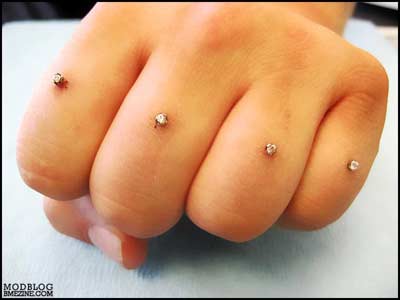Getting a proper fit on a belly button ring has nothing to do with your body size, it has to do with the angle and depth of the actual piercing.
There are standards in the industry, but your Piercer may have to make adjustments for your navel type. Some Piercers may not work within the standards that are set in the industry, making it more difficult to find jewelry that will fit correctly.
The standards for a navel piercing are 14 gauge for the thickness of the barbell and 3/8" to 7/16" for the length barbell to be worn, once the piercing has healed.
Your piercer will use a longer curved barbell, or a ring for the initial piercing. This is to allow for swelling and to leave room for proper cleaning.
Once the piercing has healed enough to change the jewelry, normally 2 months, it is time to determine the correct size for your navel piercing.
Let's begin with the correct way to measure a curved barbell. With the top ball threaded all the way on, you are going to measure in a STRAIGHT line, not along the curve of the barbell. The two points will be:
#1- Where the top ball meets the barbell on the under side of the ball.(holding the barbell up and down, as if it's being worn).
#2- Where the bottom design, or ball, meets the barbell on the top side of the ball.
Measure in a Straight line from these two points. The two pionts will both be on the inside of the curve.
Metric Conversion: 5/16"=8mm, 3/8"=10mm, 7/16"=11mm, 1/2"=12mm, 9/16"=15mm.
Do not fit the curved barbell to have no barbell showing. You need to have some barbell displayed, as this allows air to the piercing and prevents the jewelry from trying to pull into the piercing. You should have about 1/4" of barbell showing.
You may need to experiment with a few sizes, to find your best fit. Here is the basic rule of thumb.
Shallow Piercings = 5/16" (8mm)
Standard Piercings = 3/8" (10mm) or 7/16" (11mm)
Deep Piercings = 1/2" (12mm)
Very deep Piercings = 9/16" (15mm)
Most shops only sell the standard length, because most manufactures only produce the one size. Our shop has a large selection of all lengths, because we manufacture many of our designs.
You can find a large selection of the 5/16", 1/2" & 9/16" length curved barbell designs Here
























